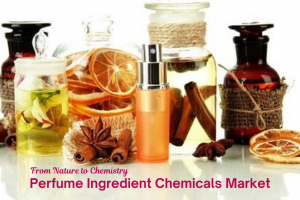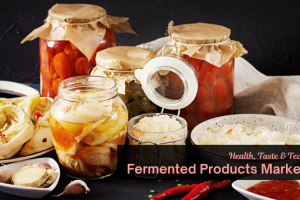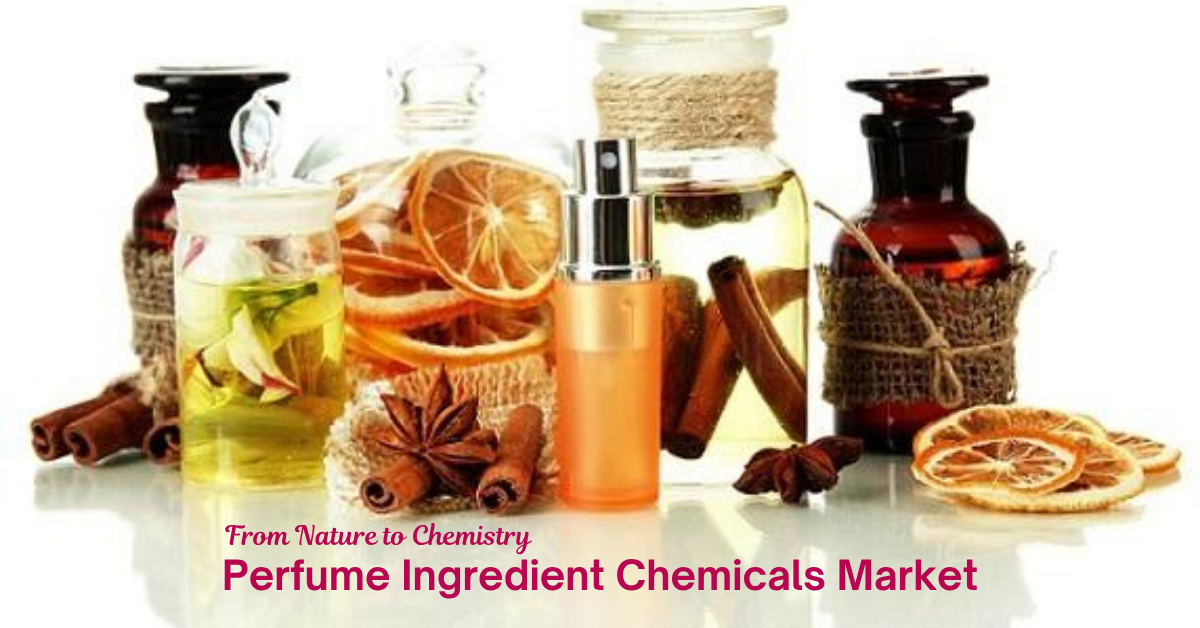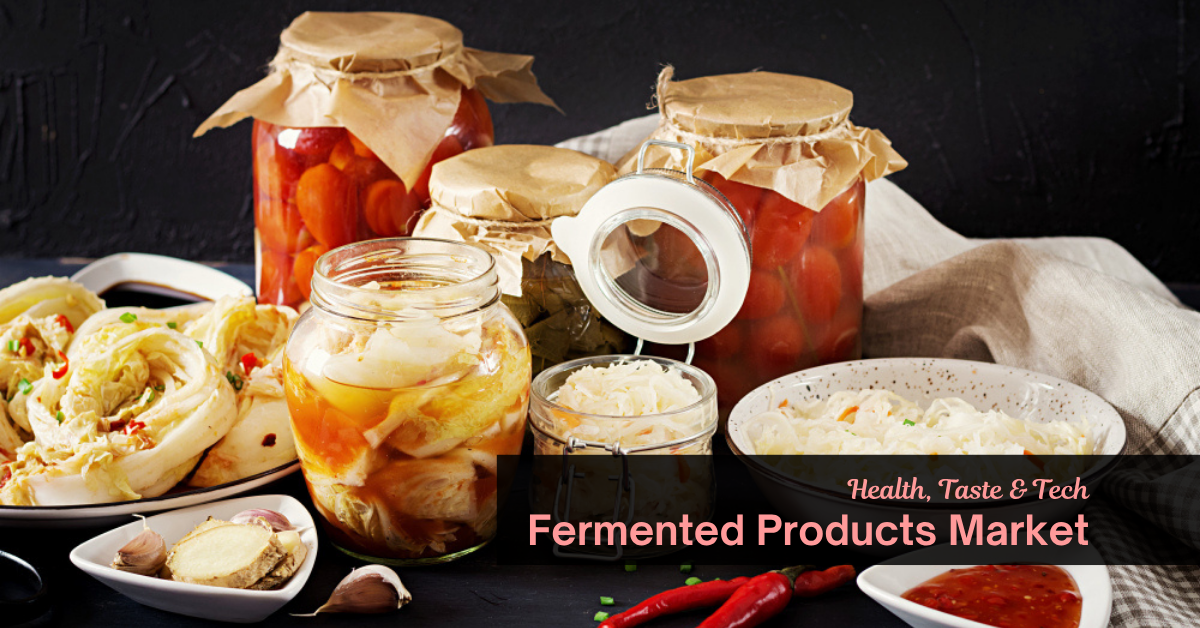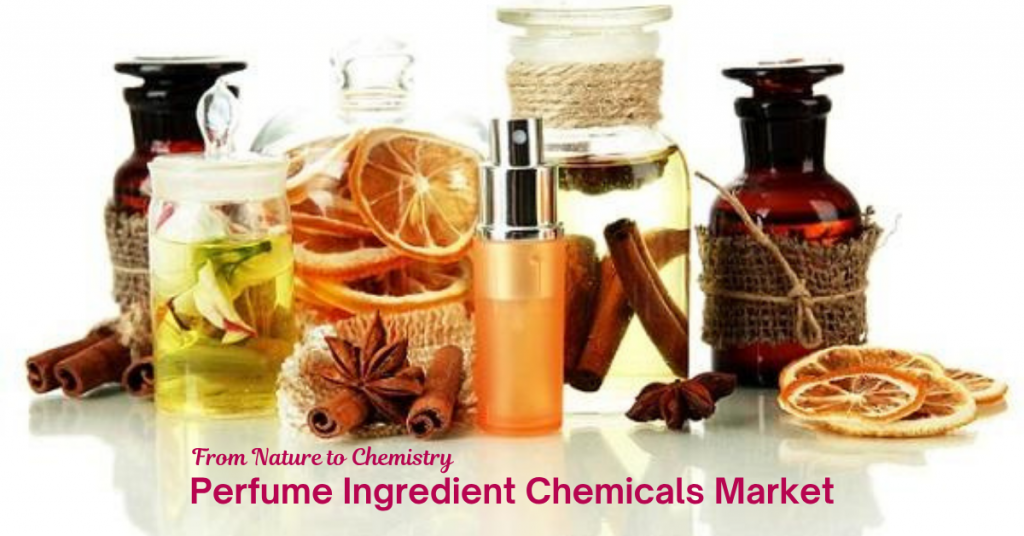
Market Overview
The Perfume Ingredient Chemicals Market is projected to grow from USD 7115 million in 2024 to approximately USD 11,426.09 million by 2032, reflecting a compound annual growth rate (CAGR) of 6.1% over the forecast period. This growth trajectory is fueled by a rising global demand for personal care products and a heightened consumer inclination towards natural and synthetic fragrance components. As perfumery becomes an essential component of cosmetics, body care, and household products, the demand for specialized ingredients continues to increase.
Perfume ingredient chemicals are the building blocks of fragrances and encompass a wide range of natural and synthetic substances. These include essential oils, aroma chemicals, resins, musks, and various floral or fruit-based extracts. With growing awareness around self-care and hygiene, fragrance-based products are increasingly incorporated into daily routines, expanding the consumption base for such ingredients.
In today’s global context, the market’s importance has intensified with consumer expectations shifting toward transparency, clean-label formulations, and sustainable sourcing. Fragrance houses are investing heavily in innovation, aiming to balance synthetic performance with natural appeal. Moreover, rising disposable incomes in emerging markets, such as Asia Pacific and Latin America, are contributing to expanded product penetration. Regulatory changes in the EU and North America are further influencing ingredient selection, shaping industry standards and safety protocols.
With emerging technologies in extraction methods and sustainable chemistry, the market is poised for diversified expansion. Industry leaders are focusing on custom scent creation and regional product adaptation, signifying the market’s evolving and strategic relevance.
Read full report: https://www.credenceresearch.com/report/perfume-ingredient-chemicals-market
Market Drivers
Rising Demand for Personal Care and Cosmetic Products
A significant driver of the perfume ingredient chemicals market is the steady rise in consumption of cosmetics, deodorants, and skincare products. Consumers increasingly prefer products infused with captivating fragrances. According to recent trends, beauty and personal care sectors are seeing robust growth, particularly in emerging economies. This expansion directly boosts demand for varied aromatic ingredients.
Growing beauty consciousness, especially among younger demographics, has further fueled the adoption of fragranced grooming products. Brands are launching scent-enhanced versions of soaps, lotions, and hair care items to appeal to diverse consumer preferences. The premiumization of personal care lines is also promoting higher-quality perfume ingredients. Additionally, growing male grooming trends are opening up new avenues for masculine fragrance blends. Collectively, these developments are reinforcing the market’s upward trajectory.
Shift Toward Natural and Sustainable Ingredients
Growing environmental consciousness and consumer demand for clean-label products have propelled the industry towards natural and biodegradable fragrance components. Essential oils and botanical extracts are increasingly preferred over synthetic chemicals. Leading companies are investing in ethical sourcing and green chemistry to meet eco-conscious customer preferences.
Sustainability certifications and traceability are now becoming industry standards, especially in European and North American markets. Consumers are demanding transparency in ingredient sourcing, pressuring brands to adopt greener practices. Indigenous plant-based scents and ethically harvested florals are gaining favor. These sustainable ingredients often carry storytelling appeal, which enhances brand perception. As sustainability evolves into a key value proposition, it will drive long-term ingredient selection strategies.
Technological Advancements in Extraction and Synthesis
Innovations in extraction techniques and synthetic biology have enabled manufacturers to produce high-quality, cost-effective perfume ingredients. Techniques like supercritical fluid extraction and enzymatic processes have improved yield and purity while reducing environmental impact. These advancements also help address the seasonal scarcity of certain natural resources.
Advancements in biotechnology allow the replication of rare natural scents without harming ecosystems. Lab-engineered musk alternatives and aroma molecules have expanded formulation possibilities. Companies are investing in AI-integrated R&D labs to speed up discovery cycles. Automation in distillation and extraction ensures consistency across batches. As these innovations become more accessible, they are expected to lower costs and improve scalability across global supply chains.
Rising Popularity of Customized Fragrance Products
With consumers seeking personalized experiences, the demand for bespoke fragrances and artisanal perfumes has grown significantly. This trend drives the need for unique and exotic ingredients, thereby expanding the market for specialized perfume chemicals. Niche perfume brands and luxury product lines are leveraging these trends to cater to a discerning clientele.
Social media platforms have amplified demand for individualized scent profiles and limited-edition collections. Digital scent profiling tools now allow consumers to design personalized fragrances from home. The premium fragrance segment, particularly in Europe and the Middle East, is capitalizing on this demand surge. Ingredient suppliers offering exclusive and rare aromatic compounds have seen increased business. This customization wave is expected to reshape ingredient innovation pipelines globally.
Market Challenges
Regulatory Compliance and Safety Standards
Perfume ingredient manufacturers must adhere to strict international safety guidelines, such as those established by the International Fragrance Association (IFRA) and REACH regulations in Europe. Compliance challenges can slow innovation and raise production costs.
Navigating varying regional regulations adds complexity for global players. Periodic updates to restricted substances lists require continuous reformulation efforts. Labeling and allergen disclosure mandates further complicate packaging and documentation. Non-compliance risks product recalls and brand damage. Companies must allocate substantial resources to regulatory affairs teams to ensure adherence.
Fluctuating Prices of Natural Ingredients
The cost of sourcing high-quality essential oils and botanical extracts often fluctuates due to seasonal availability, climate impact, and geopolitical factors. This variability creates supply chain instability and affects profit margins.
Crop failures or unpredictable weather patterns can significantly impact ingredient availability. Suppliers in politically unstable regions further intensify price volatility. Logistics disruptions and increased fuel costs add to the burden. Manufacturers must hedge their sourcing with synthetic alternatives, which may not always match consumer preferences. This price unpredictability challenges long-term contract planning.
Sustainability Pressures and Environmental Impact
Sourcing natural ingredients raises concerns about over-harvesting and ecological damage. As sustainability becomes central to corporate strategies, manufacturers must invest more in responsible sourcing and eco-certifications, leading to increased operational expenses.
Biodiversity loss and unethical labor practices in some regions have sparked NGO and consumer scrutiny. Eco-certification costs and third-party audits add financial and administrative burdens. Brands risk backlash from greenwashing claims if practices are not transparent. Balancing cost-efficiency with genuine sustainability efforts is increasingly difficult. This pressure has prompted exploration of synthetic biology and fermentation-based alternatives.
High Competition Among Market Players
The market’s competitive nature, dominated by global giants and regional specialists, creates price wars and innovation pressure. Smaller players may struggle to maintain market share without continuous investment in R&D and marketing.
Established players leverage economies of scale, making it hard for new entrants to compete on price or volume. Branding and long-term supplier relationships often favor incumbents. Market saturation in developed regions leads to intense portfolio differentiation. Mergers and acquisitions are reshaping the competitive landscape. To survive, niche firms must find unique ingredient propositions or regional specialization strategies.
Market Opportunity
Expanding Emerging Markets
Markets in Asia Pacific, Latin America, and the Middle East & Africa present untapped potential due to rising disposable incomes, increasing urbanization, and growing interest in luxury personal care products.
Rapid urbanization is influencing grooming habits and increasing access to premium goods. Modern retail outlets and online platforms are driving fragrance availability in tier-2 and tier-3 cities. Local players are collaborating with global fragrance houses to launch regionally inspired products. Governments are also investing in chemical parks, easing ingredient manufacturing. These trends signal immense future growth potential in emerging economies.
Growth of Niche and Artisan Fragrances
Consumers are increasingly seeking distinctive and exclusive scents, fueling demand for artisanal fragrances. This opens opportunities for suppliers of rare and exotic perfume ingredients.
Small-batch perfumers often source from local and rare botanicals, encouraging biodiversity use. Limited-edition product lines demand flexibility and speed in ingredient delivery. Social media has helped niche brands connect directly with scent-savvy consumers. Storytelling around ingredients is key to their appeal. Ingredient suppliers who can offer customization and origin traceability will benefit the most.
Rise of E-commerce and Direct-to-Consumer Channels
Online retail platforms have enabled wider reach for fragrance brands. Ingredient suppliers can now collaborate with smaller D2C brands, creating a diversified demand for both natural and synthetic components.
D2C platforms help ingredient suppliers access insights on real-time consumer preferences. E-commerce has reduced market entry barriers for startups, increasing the diversity of product offerings. Subscription boxes and sample kits are promoting fragrance discovery. Virtual scent profiling tools enhance online shopping experiences. This shift to digital is creating agile demand across the supply chain.
Integration of AI in Scent Development
AI and machine learning are being used to predict consumer scent preferences, optimize formulations, and speed up product development cycles. Ingredient manufacturers can leverage this tech for precision-driven innovation.
AI tools are also helping predict ingredient interactions and olfactory performance. This reduces the time and cost of iterative testing. Algorithms can detect market trends and suggest combinations likely to perform well. Companies can use data analytics to personalize offerings for different demographics. This intelligent approach fosters innovation while reducing wastage and cost overruns.
Market Segmentation
By Product Type
- Natural Ingredients
- Essential Oils
- Floral Extracts
- Fruit Oils
- Synthetic Ingredients
- Aromachemicals
- Musks
- Synthetic Resins
By Application
- Fine Fragrances
- Perfumes
- Eau De Toilettes
- Eau De Parfums
- Personal Care
- Body Lotions
- Shampoos
- Deodorants
- Household Products
- Air Fresheners
- Cleaning Products
- Scented Candles
By Region
North America
- U.S.
- Canada
- Mexico
Europe
- UK
- France
- Germany
- Italy
- Spain
- Russia
- Belgium
- Netherlands
- Austria
- Sweden
- Poland
- Denmark
- Switzerland
- Rest of Europe
Asia Pacific
- China
- Japan
- South Korea
- India
- Thailand
- Indonesia
- Vietnam
- Malaysia
- Philippines
- Taiwan
- Rest of Asia Pacific
Latin America
- Brazil
- Argentina
- Peru
- Chile
- Colombia
- Rest of Latin America
Middle East & Africa
- GCC Countries
- South Africa
- Rest of the Middle East and Africa
Regional Analysis
North America
North America remains a mature market, led by the U.S., driven by high consumer spending on luxury and personal care products. The presence of major fragrance houses and consistent product innovation support market growth.
The clean-label movement is particularly strong in North America, influencing ingredient formulation trends. Natural fragrance blends and allergen-free components are in high demand. Leading brands are focusing on gender-neutral and functional fragrances. The region also invests heavily in fragrance safety testing and regulatory transparency. Innovation hubs in the U.S. contribute to advancements in synthetic biology and fragrance encapsulation.
Europe
Europe dominates the global perfume ingredient chemicals market, particularly in France, Germany, and Italy. Home to the world’s top fragrance companies, the region emphasizes sustainable and natural ingredient sourcing aligned with EU regulations.
France continues to be the heart of global perfumery, driving luxury and fine fragrance trends. Germany and Switzerland lead in aroma chemical production and R&D. The European Green Deal and REACH compliance are shaping industry practices. Consumers prioritize botanical sourcing and ethical credentials. Europe’s sophisticated regulatory landscape promotes high-quality and safe perfume compositions.
Asia Pacific
Asia Pacific is the fastest-growing market, with China, India, and Japan experiencing a surge in demand for personal care and grooming products. Increasing middle-class populations, beauty consciousness, and local manufacturing growth enhance regional market expansion.
K-beauty and J-beauty trends are influencing regional and global fragrance development. Herbal and ayurvedic ingredients are gaining prominence in India’s booming beauty sector. Localization and traditional scent preferences guide product formulations. China’s expanding e-commerce sector accelerates perfume accessibility. Regional players are collaborating with international ingredient suppliers to boost product innovation.
Latin America
Latin America shows consistent growth, led by Brazil and Argentina. Rising disposable incomes, increasing awareness of personal hygiene, and a growing middle class contribute to the rising demand for fragrance-infused products.
Brazil has emerged as a global hub for fragrance consumption, especially in mass-market segments. Local festivals and cultural traditions influence scent preferences and product variety. Argentina and Chile show rising interest in natural perfumery and sustainability. Increasing participation of women in the workforce is driving demand for grooming products. The region also benefits from abundant botanical resources for ingredient sourcing.
Middle East and Africa
Middle East and Africa represent emerging growth zones, where changing lifestyles and expanding retail access are driving perfume consumption. GCC countries, especially Saudi Arabia and UAE, are investing heavily in luxury and niche perfumery, boosting ingredient demand.
Middle Eastern markets exhibit a strong cultural attachment to perfume and oud-based blends. Luxury fragrances dominate, with long-lasting performance being a key criterion. Africa shows potential in urban areas where Western beauty standards are gaining traction. Local traditions inspire unique fragrance combinations. Regional investment in beauty infrastructure will further elevate demand.
Top Companies
- BASF SE
- Eternis Fine Chemicals
- YingYang (China) Aroma Chemical Group
- KDAC CHEM Pvt. Ltd.
- Frutarom
- Harmony Organics Pvt. Ltd.
- Atul Ltd.
- Godavari Bioreneries Ltd.
- Givuadan
- Firmenich
- International Flavors and Fragrances Inc.
- Symrise
Future Outlook
- Continued growth expected in Asia Pacific due to rising disposable income and beauty product demand.
- Greater consumer interest in sustainable ingredients will boost essential oils and natural extract usage.
- Artificial Intelligence will assist in personalized fragrance design and ingredient optimization.
- Biotechnological advances will improve production efficiency and reduce reliance on natural resources.
- Increasing demand for cruelty-free and vegan products will shape ingredient sourcing strategies.
- Regulatory changes will enforce cleaner, safer formulations with wider global acceptance.
- Integration of fragrance in household cleaning products will create new application streams.
- Direct-to-consumer models will support independent fragrance brands and niche players.
- Global collaborations between ingredient suppliers and luxury perfume houses will increase.
- Innovations in encapsulation and long-lasting fragrance delivery systems will drive product R&D.
Read full report: https://www.credenceresearch.com/report/perfume-ingredient-chemicals-market


